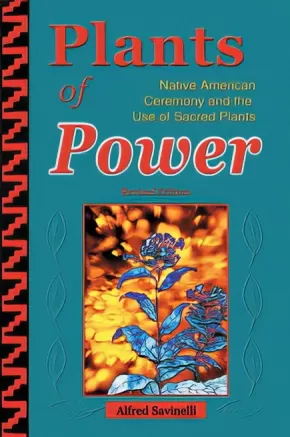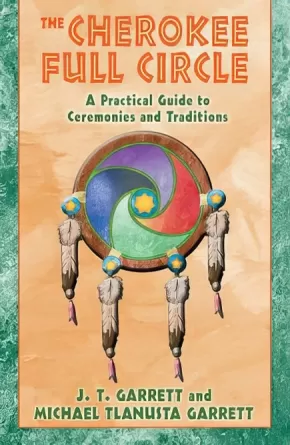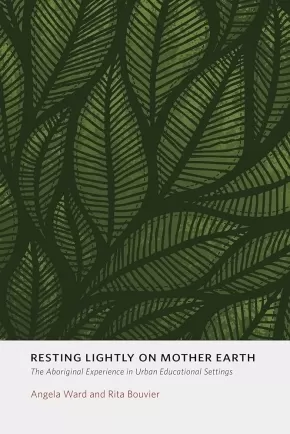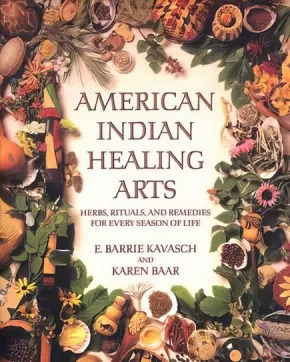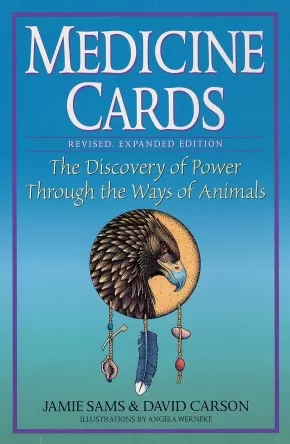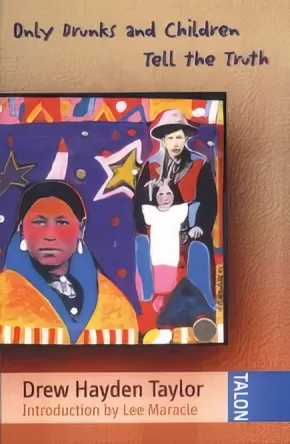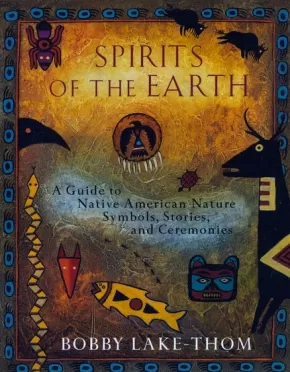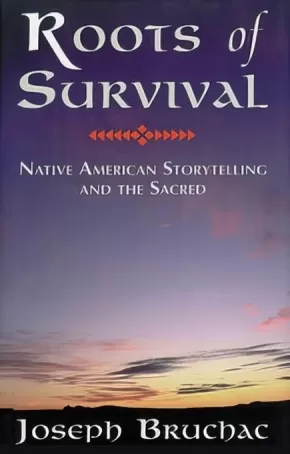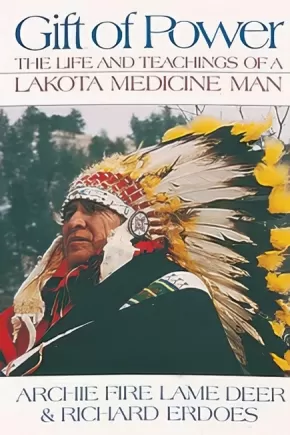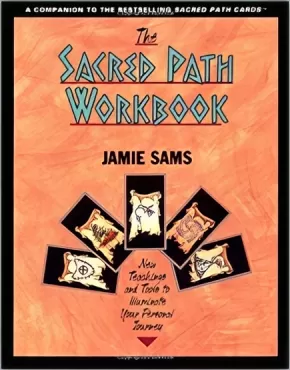Healing and Wellness
Synopsis:
This comprehensive guide to the sacred plants traditionally used by Native Americans and other Indigenous peoples presents 14 significant plants, with information on their properties, growing conditions, and medicinal applications (incense cedar, red cedar, copal, juniper, lavender, mugwort, osha, pinon, white sage, desert sage, sweet grass, ceremonial tabacco, red willow bark and yerba santa). Descriptions of Native American ceremonies and rituals in which these plants play a central role are included.
Synopsis:
A comprehensive overview of Native American spiritual principles and their application for personal spirit-healing.
• Includes traditional sacred exercises, teaching tales, case studies, and suggested rituals for individual and group healing.
• Outlines the core principals of Native American traditional values and teaches how to apply them to the contemporary path of wellness and healing.
• Publication to coincide with annual Full Circle gathering in September 2002
The Four Directions, the four seasons, and the four elements that make up the sacred hoop of the full circle must be in right relationship with one another or disharmony will result. Native American ritual has always emphasized the restoration of balance through ceremonies that provide a forum for learning, transition, and expressions of personal growth. Now Cherokee authors J. T. and Michael Garrett share Native American traditions to explore interrelationships as a tool for growth and transformation.
The Cherokee Full Circle gathers techniques representing Native American cultures from across America--stories, exercises, and individual and group rituals--to teach the inherent dynamics of right relationship and apply them to the healing path. The authors provide a comprehensive overview of Native American spiritual principles and traditions and demonstrate how these ideas and methods can be applied universally to deal with life's situations--from depression and grieving to finding purpose and establishing positive relationships.
Synopsis:
Joseph M. Marshall’s thoughtful, illuminating account of how the spiritual beliefs of the Lakota people can help us all lead more meaningful, ethical lives.
Rich with storytelling, history, and folklore, The Lakota Way expresses the heart of Native American philosophy and reveals the path to a fulfilling and meaningful life. Joseph Marshall is a member of the Sicunga Lakota Sioux and has dedicated his entire life to the wisdom he learned from his elders. Here he focuses on the twelve core qualities that are crucial to the Lakota way of life--bravery, fortitude, generosity, wisdom, respect, honor, perseverance, love, humility, sacrifice, truth, and compassion. Whether teaching a lesson on respect imparted by the mythical Deer Woman or the humility embodied by the legendary Lakota leader Crazy Horse, The Lakota Way offers a fresh outlook on spirituality and ethical living.
Additional Information
256 pages | 4.88" x 7.76"
Synopsis:
“The Residential School experience had serious negative consequences for many of our people who have suffered in silence for too long. It is time to take the first step and let others know they are not alone in their suffering. No matter how painful, the stories of our people must be told and heard. Through sharing our past, we can begin to heal ourselves, our communities, our people as we look to a better tomorrow.” —Phil Fontaine, Grand Chief, Assembly of Manitoba Chiefs, former Residential School student
“Any person interested in understanding the Micmac people must read this book. It chronicles the rebuilding of a nation that was bereft of its children. Years have passed, some have spoken but many remain silent, indicating that their wounds have yet to heal.” Jean C. Knockwood, B.A., Director of Post Secondary Education, Indian Brook Reserve, Shubenacadie, Nova Scotia
“These long overdue apologies [from the Canadian government and the Oblate order] are necessary, but they can do little to mend the damage caused by the suffering of generations of Native children in the residential schools. We are only now healing ourselves from that suffering. I see this book as part of that beginning.” —Isabelle Knockwood, from her 1992 Introduction
Synopsis:
The voices of Aboriginal and non-Aboriginal participants are heard as they chronicle their survival in mainstream school systems. The authors describe and analyze the experiences of Aboriginal students, teachers, and pre-service teachers struggling to find a place in urban society. Some voices are resistant, others angry, many questioning, as they enter into tentative coalitions with other urban teachers who pursue social justice for Aboriginal peoples. The editors open the book with a wide-ranging look at the contexts of urban Aboriginal education, and explore the themes of the book—identity, disconnection from the land, spirituality, the effects of a colonial legacy—from their own Aboriginal and mainstream perspectives.
A strength of the book is the diversity of backgrounds and experiences the authors bring. The writers are Aboriginal and non-Aboriginal, from Canada, the United States and Australia. They have taught and worked in elementary and secondary schools, universities and teacher education programs. All have direct experience working in urban educational settings, and all bring passionate advocacy to their writing. Resting Lightly on Mother Earth is intended for both Indigenous and mainstream educators; it is particularly suitable for teachers and administrators in urban systems, teacher educators, and graduate and undergraduate education students.
Additional Information
|
Synopsis:
American Indian Healing Arts is a magical blend of plant lore, history, and living tradition that draws on a lifetime of study with native healers by herbalist and ethnobotanist E. Barrie Kavasch.
Here are the time-honored tribal rituals performed to promote good health, heal illness, and bring mind and spirit into harmony with nature. Here also are dozens of safe, effective earth remedies--many of which are now being confirmed by modern research.
Each chapter introduces a new stage in the life cycle, from the delightful Navajo First Smile Ceremony (welcoming a new baby) to the Apache Sunrise Ceremony (celebrating puberty) to the Seminole Old People's Dance.
At the heart of the book are more than sixty easy-to-use herbal remedies--including soothing rubs for baby, a yucca face mask for troubled skin, relaxing teas, massage oils, natural insect repellents, and fragrant smudge sticks. There are also guidelines for assembling a basic American Indian medicine chest.
Additional Information
336 pages | 7.30" x 9.07"
Synopsis:
Discover the tool that millions of people worldwide are using for guidance, inspiration, and help in finding answers to life's questions. now, revised and expanded to include eight additional cards, this unique and powerful divination system draws upon ancient wisdom and tradition to teach the healing medicine of animals. Medicine Cards has found its way into the hearts and hands of many, guiding the way to healing the body, emotions, mind, and spirit, and providing insight into and understanding of one's unique purpose in life.
A great resource to use with intermediate and secondary students! -Terri Mack
Reviews
“Since the publication of the Navaho novel, Seven Arrows, over twenty years ago, I haven't seen anything so adventurous or beautifully executed as Medicine Cards...this handsome and inviting package has much to teach us all.” —Patricia Holt, San Francisco Chronicle
“A potent yet refreshingly simple divination tool that can help up reconnect to the sources of life's natural guidance...extraordinarily well crafted. This work is plentiful, overflowing with the richness of the Native American way of life.” —Yoga Journal
Additional Information
256 pages | 5.77" x 8.84" | 62 black-and-white illustrations, cards include full color illustrations
Synopsis:
Only Drunks and Children Tell the Truth is the emotional story of a woman’s struggle to acknowledge her birth family. Grace, a Native girl adopted by a White family, is asked by her birth sister to return to the Reserve for their mother’s funeral. Afraid of opening old wounds, Grace must find a place where the culture of her past can feed the truth of her present. Cast of 2 women and 2 men.
Reviews
“…this play is a very tender, engaging look at two strangers learning to be sisters…witty one-liners and snappy dialogue has crafted likeable, real characters…brings a satisfying sense of closure to the struggles of Barb and Janice/Grace. It is a welcome ending, one that reflects hope for the future – not only for these two sisters , but also for all the others who have yet to find their way home.” - Cheryl Isaacs, Aboriginal Voices.
Awards
- James Buller Award for Playwright of the Year, 1997
- Dora Mavor Moore Award for Outstanding New Play, Small Theatre Division, 1996.
Educator Information
Grades 11-12 BC English First Peoples resource for the units Yes, there is Funny Stuff - Humour in First Peoples Literature and What Creates Family?
Additional Information
112 pages | 6.00" x 9.00"
Synopsis:
“There are ancient secrets and lessons hidden in nature. If you seek for guidance, you will discover truth.” —Bobby Lake-Thom
Much of the ancient knowledge that has been passed down from Native American medicine men, or shamans is in danger of being lost. Bobby Lake-Thom, a Native American healer known as Medicine Grizzly Bear, has sought to preserve this powerful heritage by sharing his wisdom and experience learning from the world around us. The result is Spirits of the Earth, an extraordinary compilation of legends and rituals about nature’s ever-present signs. From the birds that soar above us to the insincts beneath our feet, Bobby Lake-Thom shows how the creatures of the earth can aid us in healing and self-knowledge.
What does it mean if a hawk appears in a dream? What are the symbolic interpretations of a deer, a skunk, a raccoon? Lake-Thom, who has studied with the elders of many tribes, explains the significance of animal figures as manifestations of good or evil, and shows how we can develop our own powers of awareness and intuition. The first book of its kind, this practical and enlightening resource includes dozens of fashinating animal myths and legends, as well as exercises and activities that draw upon animal powers for guidance, healing, wisdom, and the expansion of spiritual influences in our lifes. You’ll discover here:
- How animals, birds, and insects act as signs and omens
- The significance of vision quests
- How to make and use a medicine wheel
- The role of spirit symbols—and how they affect the unconscious
- Excercises for creative dreaming
- The power of the earth-healing ceremony
- How to increase your spiritual strength and create sacred spaces
- And more
Synopsis:
Herbal teas have their own characteristic virtues. Some are slightly stimulating, others are soothing and induce quiet sleep or act as tranquilizers. Many are tonics that can bring an "out-of-gear" system back to complete health. The author describes a wide range of tea-making herbs and gives instructions for their preparation and use.
New edition of the classic best-seller.
Additional Information
96 pages | 5.00" x 7.75"
Synopsis:
Learn how to plan and prepare a garden site, celebrate the harvest, create traditional gardens, such as the "˜Three Sisters Garden" of corn, beans, and squash, and make Native American crafts such as gourd rattles and corn husk dolls, and use its many recipes to cook Native meals.
Additional Information
176 pages | 1.11" x 1.11"
Synopsis:
As the preeminent Native American storyteller today, Joseph Bruchac has helped to bring the wisdom of Native stories to a widespread audience. Here for the first time he offers his thoughts on the power of these stories, how they have influenced his own life, and how they may help us navigate with hope into the coming century.
Additional Information
|
Synopsis:
This book contains the reflections of one Mohawk woman and her struggles to find a good place to be in Canadian society. The essays, written in enjoyable and accessible language, document the struggles against oppression that Aboriginal people face, as well as the success and change that have come to Aboriginal communities. It speaks to both the mind and the heart.
Synopsis:
With surprising candor, Archie Fire Lame Deer describes the magic and power of the Native American spirit life. Archie's compelling narrative recaptures his boyhood years under the tutelage of his medicine-man grandfather on a South Dakota farm. We follow him from Catholic school runaway to Army misfit, from bartender to boozer, from Hollywood stuntman to chief rattlesnake catcher of the state of South Dakota. And we exult with him when he comes home to the world of spirit.
Synopsis:
An invaluable new companion to the bestselling Sacred Path Cards, this workbook provides even more of the Native teachings to discover personal truths and one's path in life.
Additional Information
304 pages | 7.37" x 9.25"

